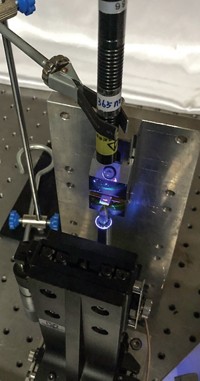Advertisement
Grab your lab coat. Let's get started
Welcome!
Welcome!
Create an account below to get 6 C&EN articles per month, receive newsletters and more - all free.
It seems this is your first time logging in online. Please enter the following information to continue.
As an ACS member you automatically get access to this site. All we need is few more details to create your reading experience.
Not you? Sign in with a different account.
Not you? Sign in with a different account.
ERROR 1
ERROR 1
ERROR 2
ERROR 2
ERROR 2
ERROR 2
ERROR 2
Password and Confirm password must match.
If you have an ACS member number, please enter it here so we can link this account to your membership. (optional)
ERROR 2
ACS values your privacy. By submitting your information, you are gaining access to C&EN and subscribing to our weekly newsletter. We use the information you provide to make your reading experience better, and we will never sell your data to third party members.
Molecular Machines
Infrared light powers motor molecule
Shift from ultraviolet to near-IR light brings biological applications of these tiny machines closer to reality
by Bethany Halford
November 5, 2020
| A version of this story appeared in
Volume 98, Issue 43

By retooling a basic molecular motor with a light-harvesting antenna, chemists at the University of Groningen have managed to shift the frequency of the fuel that spins the motor from ultraviolet light to near-infrared light. The change creates opportunities to use these motor molecules in biological and medical applications, where UV light causes damage but near-IR light is safe, says Ben L. Feringa, who spearheaded the work with Maxim S. Pshenichnikov.
“UV light can be dangerous if you want to apply it in any biological system,” Feringa says, because the high-energy light can initiate photochemical reactions that damage biological molecules. For a molecular motor that works in biological systems, he says, “you need low-intensity near-infrared light, but that requires a special trick to get enough energy to get it to rotate.”
Until now, the molecular motors made in Feringa’s lab—molecules that won him a share of the 2016 Nobel Prize in Chemistry—were powered by UV or blue light. By covalently linking an antenna that can absorb energy from near-IR light to a basic motor molecule, Feringa and Pshenichnikov’s team was able to create a system that spins in response to near-IR light. Not only is this light safer, but it also penetrates deeper into tissue, making it ideal for applications like drug delivery or photoswitchable drugs.
The new motor molecule spins when its antenna gets excited by two photons of near-IR light. Resonance-energy transfer from that excitation then prompts the double bond to isomerize, spinning the motor. Feringa notes that for the system to work, the chemists had to make sure the energy levels of the motor and the antenna were tuned to one another and that the linker connecting those components didn’t interfere with the molecule’s motion (Sci. Adv. 2020, DOI: 10.1126/sciadv.abb6165).
“This approach represents an important milestone as it allows, for the first time, truly efficient and robust powering of a molecular machine with low energy light,” says Henry Dube, who studies molecular machines at Friedrich Alexander University.
Massimo Olivucci, who studies computational photochemistry and photobiology at Bowling Green State University, says using two-photon excitation to fuel the motor with near-IR light is an elegant idea. The next step, he says, will be to find better antennas that have, for example, faster energy transfer rates.
Feringa says he’d like to use the new near-IR-powered motors in biological systems. He envisions them as a part of surfaces that could influence the properties of stem cells as they grow or as tiny drills for destroying tumor cells.





Join the conversation
Contact the reporter
Submit a Letter to the Editor for publication
Engage with us on Twitter